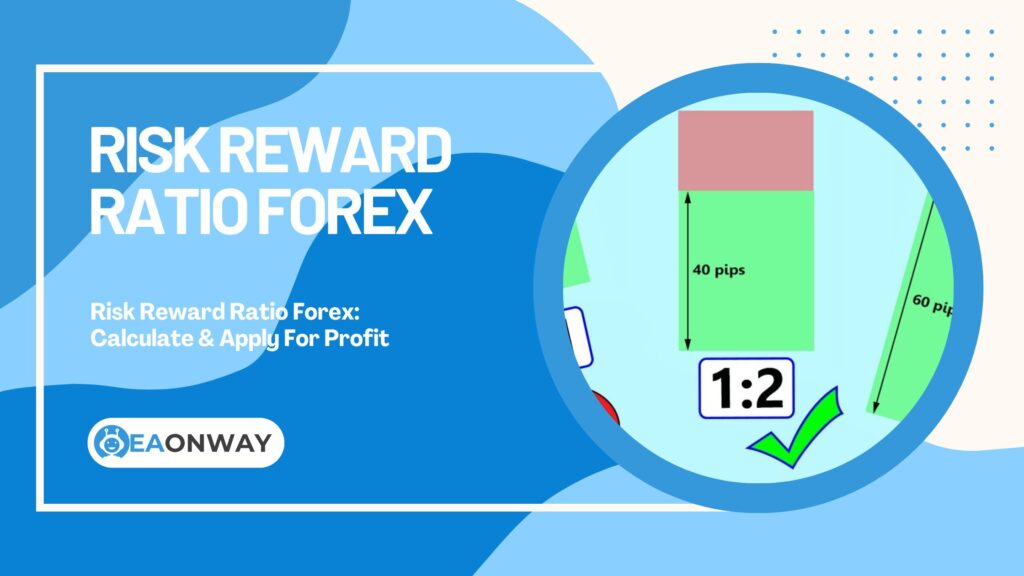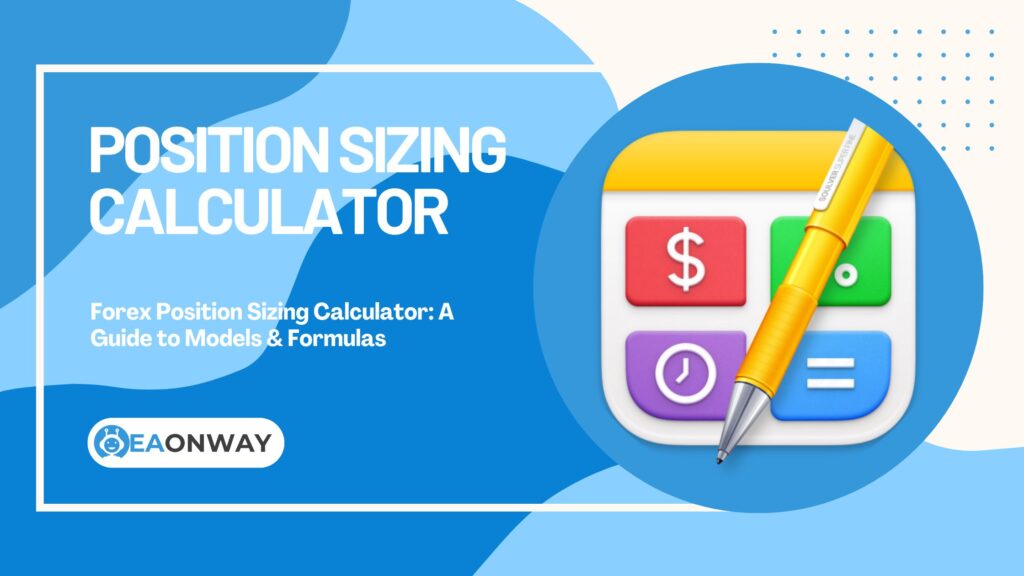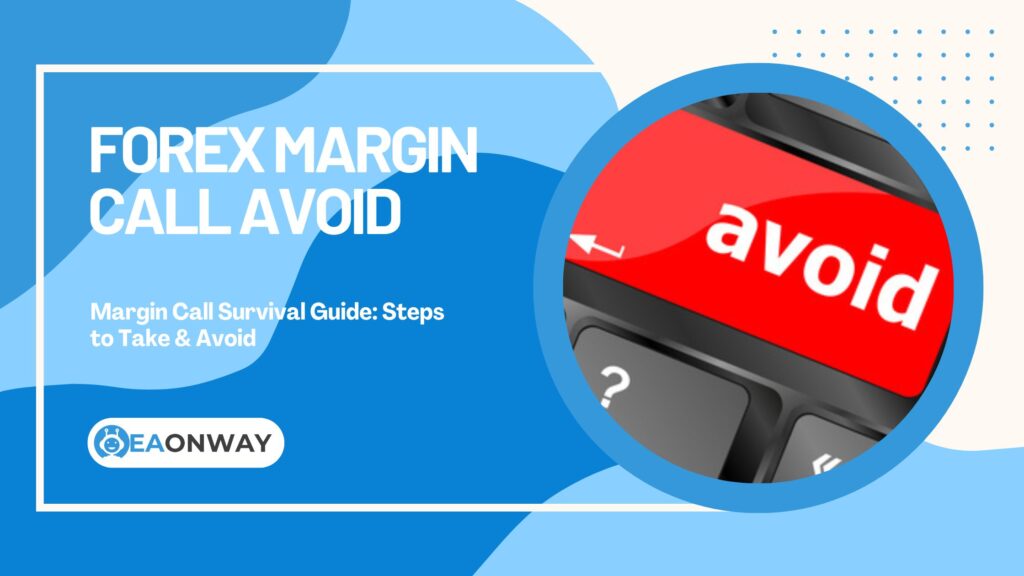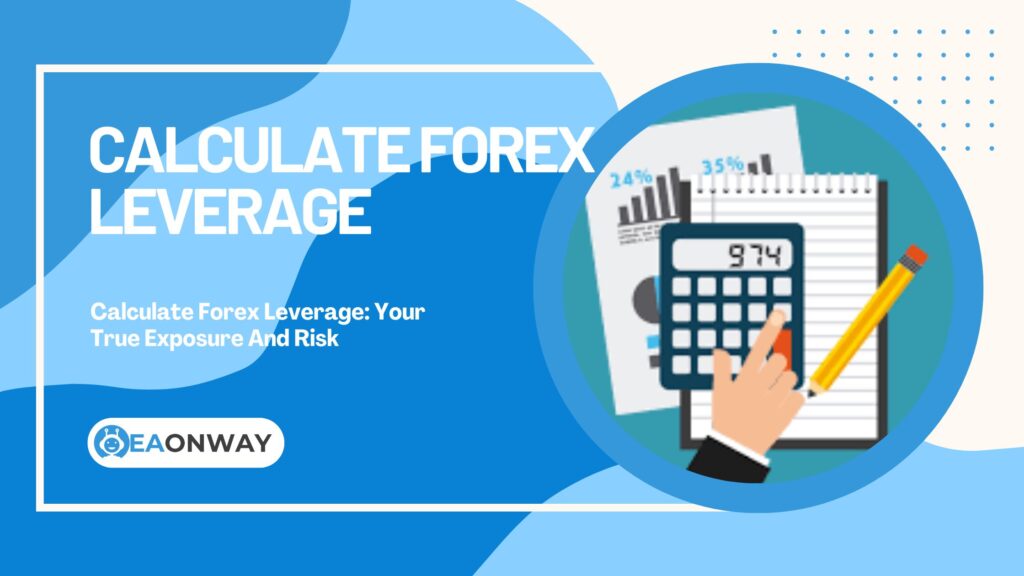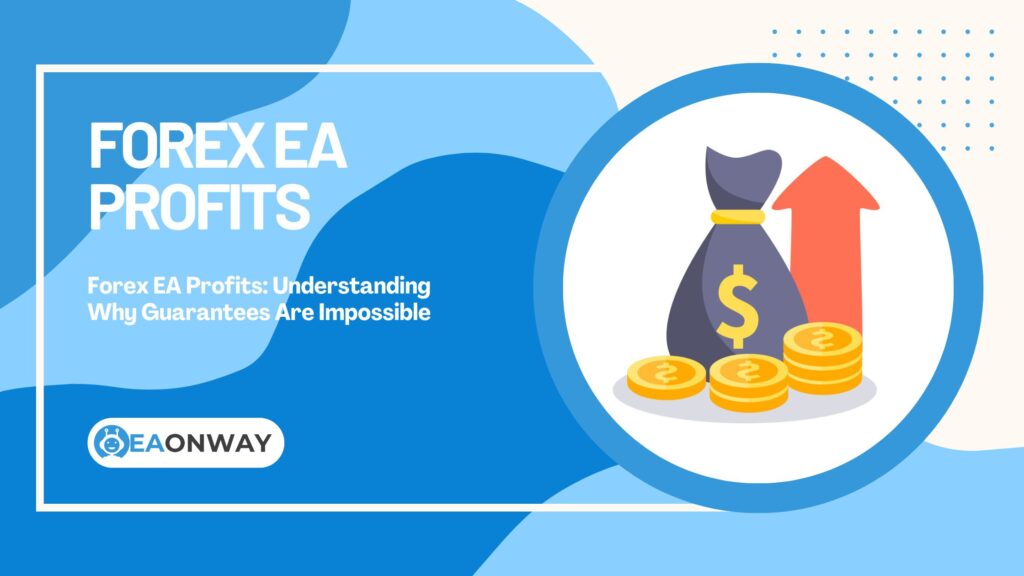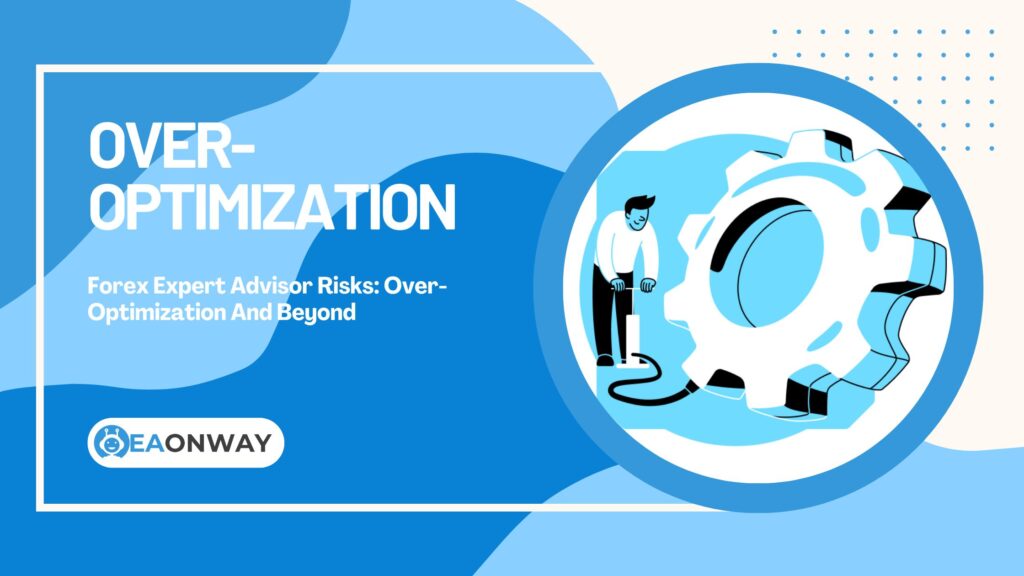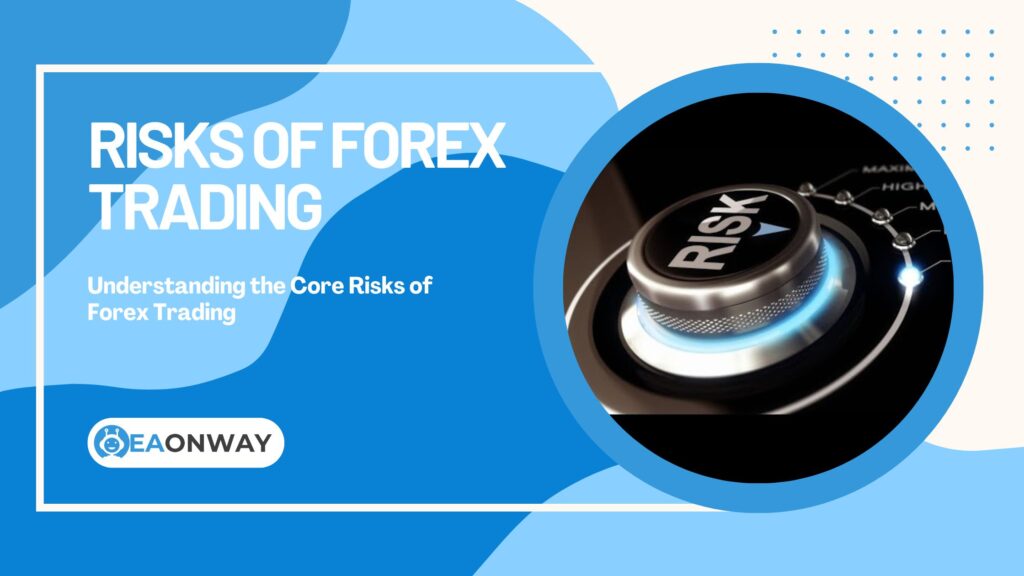Forex EA Risk Management: Mastering Drawdown Control
Understanding Forex EA risk management is absolutely fundamental before even considering using an Expert Advisor; overlooking this critical aspect, particularly drawdown control, is a primary reason why many aspiring automated traders face significant losses. Have you ever wondered why some Forex EAs seem promising in backtests but falter dramatically in live trading? Often, the answer lies not just in the strategy itself, but in how risk, especially the inevitable periods of drawdown, is managed—or mismanaged. Many traders are lured by the potential of automated profits, yet underestimate the inherent risks and the necessity of robust protective measures.
This article delves deep into the crucial concepts of drawdown and risk management specifically tailored for Forex Expert Advisors (EAs). We aim to equip you with the knowledge to navigate the complexities of automated trading safely. You will learn precisely what drawdown means in the context of EAs, how to calculate and interpret it, and explore essential risk management techniques like setting appropriate stop losses, calculating correct position sizes, and understanding the implications of leverage. Our goal is to help you grasp the potential risks involved, manage your expectations realistically, and implement strategies to protect your trading capital when using Forex EAs. We will focus purely on education, providing objective information without hype or profit guarantees, emphasizing risk awareness above all else.
Key Takeaways
Here’s a quick summary of the essential points covered in this guide:
- Drawdown Defined: Drawdown represents the peak-to-trough decline in your trading account’s equity, measuring the extent of losses during a specific period. It’s a critical indicator of risk for any trading strategy, especially automated ones.
- Risk Management is Non-Negotiable: For Forex EAs, risk management involves predefined rules and techniques (like stop losses and position sizing) to protect your capital from excessive losses. Given EAs execute automatically, robust risk controls are paramount.
- Stop Losses are Essential: A stop-loss order automatically closes a losing trade at a predetermined price level, limiting the potential loss on any single trade. Using EAs without effective stop losses is extremely risky.
- Position Sizing Controls Exposure: This determines the appropriate trade size (lots) based on your account balance and predefined risk per trade, preventing catastrophic losses from single trades.
- Maximum Drawdown Matters: This metric shows the largest historical percentage loss your account suffered. It’s vital for assessing an EA’s risk profile but remember past performance doesn’t guarantee future results.
- Risk Per Trade is Foundational: Defining a maximum percentage of your capital (e.g., 1-2%) to risk on any single trade is a cornerstone of disciplined trading and capital preservation when using EAs.
Understanding Drawdown in Forex EA Trading
Drawdown is a term you’ll encounter frequently when discussing trading performance, especially with Forex EAs. Understanding it thoroughly is the first step towards effective Forex EA risk management.
What is Drawdown in Forex Trading?
Drawdown is the measurement of a decline in your trading account’s capital from a peak (highest point) to a subsequent trough (lowest point) before a new peak is achieved. It’s typically expressed as a percentage or a currency amount and represents the unrealized or realized losses experienced during a specific period. Think of it as the depth of the “valleys” your equity curve experiences between its “mountains.” Understanding drawdown is crucial because it quantifies the risk and volatility inherent in a trading strategy.
There are different ways to look at drawdown:
- Absolute Drawdown: The difference between the initial deposit and the lowest point the equity reached below the deposit level.
- Relative Drawdown: The largest percentage drop from a peak equity value to a subsequent trough equity value during a specific period. This is often considered more informative as it reflects the loss relative to the account’s growth.
- Maximum Drawdown (Max DD): The single largest percentage drop from peak to trough equity experienced over the entire history of the trading account or backtest.
Why is Drawdown Crucial for EA Users?
Drawdown is particularly critical for Forex EA users for several reasons:
- Reflects Real Performance: Backtests might look smooth, but live trading inevitably involves drawdowns. Understanding an EA’s historical or potential drawdown helps set realistic expectations.
- Psychological Impact: Experiencing significant drawdowns, even if temporary, can be psychologically challenging. Knowing the potential depth of loss beforehand helps traders endure these periods without abandoning a potentially sound strategy prematurely (or worse, interfering manually in panic).
- Capital Preservation: The primary goal of risk management is to protect your capital. Drawdown metrics directly indicate how much capital was at risk historically. A larger drawdown means a larger gain is needed just to recover back to the previous peak (e.g., a 50% drawdown requires a 100% gain to break even).
- Strategy Evaluation: Comparing the maximum drawdown of different EAs or strategies provides a crucial risk comparison point. An EA with lower historical drawdown (relative to its returns) might be preferable, indicating potentially better risk-adjusted performance.
- Broker Margin Requirements: Excessive drawdown can lead to margin calls if the account equity falls below the broker’s required maintenance margin level.
How to Calculate Drawdown for a Forex EA?
You can calculate the relative drawdown percentage using the following formula:
Drawdown (%) = ((Peak Equity Value - Trough Equity Value) / Peak Equity Value) * 100%
- Peak Equity Value: The highest point your account equity reached before the decline started.
- Trough Equity Value: The lowest point your account equity reached during that specific decline.
Example:
If your account equity reached a peak of $12,000 and then dropped to a low of $10,200 before starting to recover, the drawdown for that period would be:
(($12,000 - $10,200) / $12,000) * 100% = ($1,800 / $12,000) * 100% = 0.15 * 100% = 15%
Most trading platforms like MetaTrader 4 (MT4) or MetaTrader 5 (MT5) automatically calculate and display drawdown figures (including Maximum Drawdown) in their backtesting reports and account analysis sections, simplifying this process for EA users. However, understanding the calculation helps you interpret these reports correctly.
According to 4xDev, a prominent EA development resource, understanding how to calculate drawdown is crucial because it helps traders set appropriate expectations for their automated systems and prepare psychologically for inevitable periods of loss (Source: 4xDev: EA Risk Management).
Understanding Maximum Drawdown (Max DD)
Maximum Drawdown (Max DD) is the single largest percentage decline from a peak equity value to a subsequent trough equity value observed over the entire period being analyzed (e.g., a backtest or live trading history). It represents the worst-case historical loss streak the strategy endured.
Max DD is a vital statistic because it gives you an idea of the maximum historical pain point the EA has caused. This figure is crucial for:
- Risk Tolerance Assessment: Can you psychologically and financially withstand a similar drawdown in the future?
- Capital Allocation: Knowing the Max DD helps determine how much capital might be needed to trade the EA comfortably without risking a margin call during such a downturn.
- EA Comparison: It provides a standardized measure to compare the historical riskiness of different automated trading systems.
SpeedBot, a platform specializing in algorithmic trading, emphasizes that Maximum Drawdown is one of the most important risk metrics to evaluate before deploying any Expert Advisor in live markets, especially for high-frequency trading strategies where risks can compound quickly (Source: SpeedBot: Risk Management for High-Frequency Trading).
Crucial Caveat: While Max DD is informative, remember that the historical Max DD observed in backtesting or even past live trading is not a guarantee of the future maximum drawdown. Future market conditions can always lead to larger drawdowns than previously seen. Treat Max DD as an important indicator, but not an absolute ceiling on future risk.
Defining Forex EA Risk Management
While drawdown tells you about past or potential losses, Forex EA risk management is the active process of controlling and mitigating those risks before they occur or spiral out of control.
What is Risk Management for Forex EAs?
Risk management for Forex EAs is the implementation of a predefined set of rules, controls, and procedures designed to protect trading capital from excessive losses when using automated trading systems. It’s not just about reacting to losses, but proactively defining acceptable risk levels and embedding safeguards directly into the trading approach, often through the EA’s settings or platform functionalities. It involves quantifying risk, setting limits, and having contingency plans.
Effective Forex EA risk management encompasses several key areas:
- Setting limits on loss per trade (Stop Loss).
- Determining appropriate trade size (Position Sizing).
- Defining maximum overall risk exposure.
- Managing leverage effectively.
- Understanding and planning for potential drawdowns.
- Regularly monitoring and reviewing performance.
The EA Trading Academy, a specialized educational resource for automated traders, states that proper risk management is what separates successful EA traders from those who eventually blow their accounts, regardless of how sophisticated the trading algorithm might be (Source: EA Trading Academy: Risk Management).
Why Standard Risk Management is Essential for Automated Trading?
Applying robust risk management principles is arguably more critical for automated trading with EAs than for manual trading. Here’s why:
- Relentless Execution: EAs execute trades based on their code, without human emotion or hesitation. If market conditions turn against the strategy or if there’s a flaw in the logic, an EA can rapidly open multiple losing trades without intervention, potentially leading to significant losses very quickly if risk controls aren’t in place.
- Lack of Real-Time Discretion: Unlike a human trader who might sense changing market dynamics and pause trading, an EA will continue executing trades as programmed unless explicitly stopped or designed with adaptive capabilities. Strong, pre-set risk rules are its primary defense.
- Magnification of Errors: Small errors in EA settings (e.g., incorrect lot size calculation, wrongly placed stop loss) can be automatically repeated across many trades, amplifying their negative impact.
- Protection Against the Unforeseen: Black swan events, flash crashes, or sudden extreme volatility can occur. Predefined risk limits (like stop losses and controlled position sizes) act as crucial circuit breakers to protect capital during such unpredictable market movements.
- Disciplined Approach: EAs enforce the discipline programmed into them. Embedding sound risk management rules ensures this discipline includes capital protection, removing the emotional component that often leads manual traders to break their own rules.
- Preventing Catastrophic Loss: Ultimately, the goal is survival. Proper risk management prevents the kind of devastating losses that can wipe out a trading account, allowing the trader and the EA to continue operating over the long term.
WSOT, a resource for algorithmic traders, emphasizes that the absence of proper risk management in an EA is equivalent to trading blindfolded in a minefield—it’s not a question of if, but when, disaster will strike (Source: WSOT: Risk Management Techniques for Expert Advisors).
Without these controls, the speed and automation offered by EAs can become a liability rather than an asset.
Core Risk Management Strategies for Forex EAs
Implementing effective Forex EA risk management involves several key techniques. Mastering these is crucial for protecting your capital.
How to Set Stop Loss Orders for a Forex EA?
A Stop Loss order is an instruction placed with your broker to automatically close a losing trade when the price reaches a specific, predetermined level. Its purpose is to limit the loss on any single trade to an acceptable amount. For EAs, setting stop losses is a non-negotiable aspect of risk control.
How to Set Them:
- EA Input Parameters: Most EAs allow you to define stop-loss levels directly within their input settings in platforms like MT4/MT5. This might be specified in pips (e.g., 50 pips from the entry price), as a fixed price level, or sometimes calculated based on indicators like the Average True Range (ATR) for volatility-based stops.
- Platform Level: Even if an EA doesn’t internally manage stops, you can often configure platform settings or use additional scripts/utilities to apply stop losses to trades opened by the EA. However, it’s generally preferable for the EA itself to manage its exits.
Types of Stop Losses Suitable for EAs:
- Fixed Pip Stop: A set number of pips away from the entry price (e.g., 50 pips). Simple, but doesn’t adapt to changing market volatility.
- Volatility-Based Stop (e.g., ATR): Stop loss distance is calculated based on recent market volatility (e.g., 2x ATR). Adapts to market conditions but requires careful calibration.
- Structure-Based Stop: Placed based on technical levels like recent swing highs/lows or support/resistance. Can be effective but harder to automate consistently unless the EA’s logic specifically incorporates this.
- Time-Based Stop: Closes a trade if it hasn’t reached its target or been stopped out within a certain time frame.
Currency Solutions, a leading foreign exchange resource, emphasizes that stop losses are the most fundamental risk control measure in Forex trading, particularly for automated systems where emotional override isn’t a factor (Source: Currency Solutions: Forex Risk Management).
Warning: Be extremely cautious of EAs marketed as “no stop loss” strategies. These often rely on martingale, grid, or averaging techniques that can lead to catastrophic drawdowns and account blow-ups when market conditions turn unfavorable. A defined exit point for losing trades is a hallmark of responsible trading.
What is Position Sizing in Forex EA Trading?
Position sizing is the process of determining the appropriate amount of currency units (lot size) to trade for each position, based on your account size and predetermined risk tolerance. It is arguably one of the most critical elements of risk management, as it directly controls how much capital is exposed on any single trade. Getting position sizing wrong is a fast track to significant losses, even with a winning strategy.
The goal is to ensure that even a string of consecutive losses (which are inevitable) does not deplete your trading capital significantly. Proper position sizing prevents over-leveraging and keeps losses manageable relative to your account balance.
Common Position Sizing Methods for EAs:
- Fixed Fractional Sizing: This is a widely recommended method. You risk a fixed percentage of your account equity on each trade (e.g., 1% or 2%). The lot size is calculated based on this percentage, the stop-loss distance in pips, and the pip value for the currency pair being traded. Many EAs have inputs for “Risk Percent” to automate this.
- Formula:
Lot Size = (Account Equity * Risk Percentage) / (Stop Loss in Pips * Pip Value)
- Formula:
- Fixed Lot Sizing: Trading the same lot size for every trade, regardless of account balance or stop-loss distance. This is simpler but much riskier. As the account grows, risk per trade decreases (as a percentage), but if the account suffers losses, the fixed lot size represents an increasingly larger percentage risk, accelerating drawdown. Use with extreme caution, usually only suitable for very large accounts where the fixed lot represents a tiny fraction of equity.
Most reputable EAs will incorporate fixed fractional position sizing as an option. Ensure you understand how your EA calculates lot sizes and that it aligns with your risk management plan.
How Does Risk Per Trade Work with EAs?
Risk per trade defines the maximum amount of your trading capital, expressed as a percentage or fixed currency amount, that you are willing to lose on any single trade initiated by your EA. A common professional standard is to risk no more than 1-2% of account equity per trade.
How it Works:
- Define Your Percentage: Decide on your maximum acceptable risk per trade (e.g., 1.5%).
- Calculate Max Dollar Risk: Multiply your current account equity by your risk percentage.
- Example: Account Equity = $10,000, Risk Percentage = 1.5%
Max Dollar Risk = $10,000 * 0.015 = $150
- Integrate with Stop Loss and Position Size: This Max Dollar Risk ($150 in the example) is then used in the position sizing formula along with your chosen stop-loss distance to calculate the appropriate lot size for the next trade. This ensures that if the trade hits your stop loss, the loss incurred will be approximately equal to your predefined Max Dollar Risk.
Most sophisticated EAs allow you to input your desired risk percentage directly (e.g., Risk = 1.5). The EA then automatically calculates the appropriate lot size for each trade based on the account equity at that moment and the calculated or predefined stop-loss distance for that specific trade. This automates disciplined risk control.
Understanding the Risk-Reward Ratio in EA Strategies
The Risk-Reward Ratio (R:R) compares the potential profit of a trade (Reward) to its potential loss (Risk, determined by the stop loss). It’s calculated as:
Risk-Reward Ratio = Potential Profit / Potential Risk
- Potential Profit: Distance from entry price to take profit target.
- Potential Risk: Distance from entry price to stop loss level.
Example: If an EA enters a trade with a stop loss 50 pips away and a take profit target 100 pips away:R:R = 100 pips / 50 pips = 2
This is often expressed as 1:2 (Risk:Reward), meaning the potential profit is twice the potential loss.
Why it Matters for EAs:
The R:R ratio, combined with the EA’s win rate (percentage of winning trades), determines its long-term profitability (expectancy).
- An EA can be profitable even with a low win rate (e.g., 40%) if its average winning trade is significantly larger than its average losing trade (high R:R, e.g., 1:3).
- Conversely, an EA with a very high win rate (e.g., 80%) might still lose money if its average winning trade is much smaller than its average losing trade (poor R:R, e.g., 2:1).
Understanding the typical R:R profile of an EA (obtainable through backtesting analysis) is crucial for evaluating its viability. Be wary of EAs claiming extremely high win rates, as they often achieve this with very tight profit targets and wide (or no) stop losses, resulting in a poor R:R and the risk of large, infrequent losses wiping out many small gains.
The Dangers of Leverage and Margin Calls with EAs
Leverage allows you to control a large position size with a relatively small amount of capital (margin). While it can magnify profits, it equally magnifies losses, making it a double-edged sword, especially with automated systems.
Risks with EAs:
- Rapid Position Opening: Some EAs, particularly high-frequency or grid/martingale types, can open numerous positions quickly. High leverage combined with multiple open trades can consume available margin rapidly.
- Over-Leveraging: Relying solely on the high leverage offered by a broker without strict position sizing based on risk per trade can lead to unintentionally large positions relative to account equity. A small adverse price move can then cause substantial losses.
- Margin Calls: If losses on open positions reduce your account equity below the broker’s required maintenance margin level, you will receive a margin call. This demands you deposit more funds or the broker will automatically start closing your losing positions to reduce exposure, often locking in significant losses.
The European Securities and Markets Authority (ESMA) reported that between 74%-89% of retail investors lose money when trading CFDs, including Forex, due to leverage and other risks (Source: Currency Solutions: Forex Risk Management).
Mitigation: The key defense against leverage risk is rigorous position sizing based on a small percentage risk per trade (e.g., 1-2%) relative to your actual equity, not the potential buying power granted by leverage. Never choose an EA’s settings or trade size based on the maximum leverage your broker offers.
Advanced Risk Considerations for Forex EAs
Beyond the core strategies, several other factors play a vital role in assessing and managing the risks associated with Forex EAs.
The Importance of Backtesting for Risk Assessment
Backtesting involves simulating an EA’s trading strategy on historical price data to evaluate its potential past performance. It’s an indispensable tool for initial risk assessment.
Role in Risk Management:
- Performance Metrics: Backtesting provides key metrics like Maximum Drawdown, win rate, profit factor, and risk-reward ratio based on historical data.
- Strategy Viability: It helps determine if the strategy showed potential profitability and acceptable risk levels historically.
- Parameter Optimization (Use with Caution): Backtesting allows testing different EA settings (like stop loss levels, indicator parameters) to see their historical impact. However, excessive optimization can lead to curve-fitting, where the EA is perfectly tuned to past data but fails in live trading.
Limitations:
- Past Performance: Historical results are not indicative of future performance. Market conditions change.
- Data Quality: Backtest accuracy depends heavily on the quality and accuracy of the historical data used (e.g., tick data quality, spread modeling). Poor data leads to unreliable results. Reputable sources like the Bank for International Settlements (BIS) often discuss the complexities and evolution of Forex market data (Source: BIS Quarterly Review – FX Markets).
- Curve-Fitting: Over-optimizing an EA to fit historical data perfectly makes it unlikely to adapt to new market dynamics.
- Ignoring Real-World Factors: Standard backtests often don’t fully account for variable spreads, slippage, or execution latency, which can impact live performance.
Backtesting is a crucial first step in risk assessment, but it should be followed by forward testing (demo trading) and cautious live trading with small size.
Stress Testing Your Forex EA
Stress testing goes beyond standard backtesting by simulating how an EA might perform under extreme, adverse market conditions that may not be fully represented in the historical data used for regular backtesting.
Why it’s Needed:
- Resilience Check: To assess if the EA can survive and manage risk during periods of unexpected high volatility, flash crashes, major news events, or prolonged unfavorable trends.
- Identifying Weaknesses: Stress tests can reveal hidden flaws or vulnerabilities in the EA’s logic or risk management settings that only become apparent under duress.
How to Conduct Stress Tests (Conceptually):
- Varying Market Conditions: Test the EA on historical data periods known for extreme volatility (e.g., 2008 financial crisis, SNB event 2015, Brexit vote).
- Parameter Sensitivity: Manually adjust key parameters (like spread, slippage) in the backtester (if possible) to simulate worse execution conditions.
- Scenario Analysis: Consider hypothetical scenarios (e.g., sudden prolonged trend against the EA’s core strategy) and assess the potential drawdown based on the EA’s logic.
Stress testing helps build a more realistic picture of the potential worst-case scenarios, further informing risk management decisions.
Recognizing Risky EA Strategies (Martingale, Grid)
Certain types of EA strategies are inherently much riskier than others. It’s crucial to identify and understand these:
- Martingale EAs: These strategies typically increase position size (often doubling) after each losing trade, aiming to recoup all previous losses plus a small profit on the next winning trade.
- Risk: Requires exponentially increasing capital to sustain losing streaks. A prolonged series of losses, which is statistically possible, can quickly lead to catastrophic drawdowns and margin calls, wiping out the account. They often show smooth equity curves for periods, followed by a sudden, sharp collapse.
- Grid EAs: These place a series of buy and sell orders at predefined intervals above and below the current price, creating a “grid” of orders. They aim to profit from price oscillations within a range.
- Risk: In strongly trending markets, orders placed against the trend accumulate losses. If the trend persists without significant pullbacks, the cumulative drawdown from the open losing positions can become enormous, potentially leading to margin calls. Some grid EAs don’t use stop losses on individual grid levels, exacerbating the risk.
SpeedBot’s research indicates that Martingale and Grid strategies account for a disproportionately high percentage of catastrophic account failures among EA users, despite their initial appeal of smooth equity growth (Source: SpeedBot: Risk Management for High-Frequency Trading).
While some traders attempt to use these strategies, they require extremely careful parameterization, very deep pockets, and a thorough understanding of the high risks involved. For most retail traders, especially those new to EAs, these strategies are generally best avoided due to their potential for rapid and significant losses.
Accounting for Slippage and Execution Risk
Real-world trading involves factors that standard backtests might not fully capture:
- Slippage: This is the difference between the price at which you expected your trade to be executed (e.g., your stop-loss level or entry price) and the actual price at which it was filled by the broker. It can be negative (worse price) or positive (better price) but is often negative during fast-moving or volatile markets.
- Impact on EAs: Slippage can increase losses beyond the intended stop-loss level or reduce profits. EAs that rely on very small profit targets (scalping EAs) are particularly sensitive to slippage.
- Execution Risk: This includes delays in order execution, platform freezes, internet connectivity issues, or broker-related problems.
- Impact on EAs: Can prevent timely entry or exit, leading to missed opportunities or larger-than-expected losses. Using a reliable Virtual Private Server (VPS) can mitigate connectivity issues.
Factor in potential slippage when setting stop losses (allow some buffer) and choose reputable brokers with good execution quality. Understand that real-world results may differ from backtests partly due to these factors.
Analyzing the Equity Curve
The equity curve is a visual graph plotting the growth or decline of your trading account’s equity over time. Analyzing the shape and characteristics of an EA’s equity curve (from backtesting or live trading) provides insights into its risk profile.
What to Look For:
- Overall Trend: Is the curve generally sloping upwards (profitable) or downwards/flat (unprofitable)?
- Smoothness vs. Volatility: A smoother upward curve generally indicates more consistent performance and potentially lower risk than a highly volatile curve with sharp peaks and deep troughs, even if the latter has higher overall returns.
- Drawdown Depth and Duration: How deep are the dips (drawdowns) in the curve? How long did it take for the equity to recover back to its previous peak after a drawdown? Frequent, deep, or prolonged drawdowns indicate higher risk.
- Stagnation Periods: Are there long flat periods where the EA generated little profit?
The EA Trading Academy recommends that traders pay particular attention to the steepness of equity curve declines rather than focusing solely on the overall growth trend. A sharply falling equity curve, even within an overall uptrend, can indicate potentially dangerous risk management practices (Source: EA Trading Academy: Risk Management).
A visual analysis of the equity curve complements statistical metrics like Max DD, offering a qualitative feel for the EA’s historical behavior and risk characteristics.
Implementing and Monitoring EA Risk Settings
Understanding risk is one thing; actively implementing and monitoring controls is another.
How to Configure Risk Settings in Your EA/Platform (MT4/MT5)
Most Forex EAs running on platforms like MetaTrader 4 or MetaTrader 5 allow you to configure risk parameters through their “Inputs” tab when attaching the EA to a chart. Common settings include:
- Lot Sizing Method: Choose between Fixed Lot or Auto Lot/Money Management (often fixed fractional).
- Fixed Lot Size: If using fixed lots, specify the size (e.g., 0.10). Use with caution.
- Risk Percentage: If using fixed fractional sizing, input the percentage of equity to risk per trade (e.g., 1.0 for 1%).
- Stop Loss (Pips/Method): Specify the stop loss distance in pips, or select a method if the EA supports dynamic stops (e.g., ATR-based).
- Take Profit (Pips): Define the profit target distance.
- Maximum Slippage: Set the maximum acceptable slippage in pips for order execution.
- Maximum Spread: Set a maximum allowable spread; the EA might pause trading if the broker’s spread exceeds this limit.
4xDev emphasizes that incorrect risk parameter configuration is one of the most common reasons for EA failure, even when the underlying strategy is sound. They recommend thoroughly understanding each risk parameter and its potential impact before live deployment (Source: 4xDev: EA Risk Management).
Crucial: Always thoroughly read the EA’s manual or documentation to understand precisely what each input parameter does and how it affects the EA’s risk management calculations before trading live. Use the backtester’s “Optimization” feature cautiously, focusing on understanding parameter sensitivity rather than just finding the ‘best’ past result.
Ongoing Monitoring and Adjustment
Risk management is not a one-time setup; it requires ongoing attention:
- Regular Performance Review: Periodically (e.g., weekly or monthly), review the EA’s performance. Check the realized drawdown, win rate, profit factor, and compare them to backtested expectations.
- Equity Curve Monitoring: Keep an eye on the live equity curve. Are drawdowns within expected limits? Is the recovery happening as anticipated?
- Market Condition Awareness: Be aware of major economic news or shifts in market volatility that could impact the EA’s performance. Some EAs perform better in ranging markets, others in trending ones.
- Predefined Adjustment Rules: Have rules for when to intervene. For example:
- Stop trading if drawdown exceeds a certain threshold (e.g., 1.5x historical Max DD).
- Re-evaluate or pause the EA if performance consistently degrades over a significant period.
- Adjust risk percentage based on changes in confidence or account size (though consistency is often key).
WSOT suggests implementing a “circuit breaker” approach to EA monitoring, where specific drawdown or consecutive loss thresholds automatically trigger a pause in trading, allowing for reassessment before further capital is risked (Source: WSOT: Risk Management Techniques for Expert Advisors).
Avoid constant tinkering based on short-term results. Monitoring aims to identify significant deviations from expected behavior or breaches of your predefined risk limits.
Final Thoughts: Balancing Expectations with Reality
Navigating the world of Forex EAs requires a healthy dose of realism, particularly concerning risk. Drawdown is not an ‘if’ but a ‘when’ and ‘how much’ scenario in any trading strategy, automated or manual. The allure of hands-free profits can be strong, but it must be tempered by a thorough understanding and proactive management of the inherent risks.
The core lesson is that Forex EA risk management and drawdown control are not optional extras; they are the foundation upon which any sustainable automated trading effort must be built. Techniques like setting appropriate stop losses, calculating meticulous position sizes based on a defined risk per trade, understanding leverage, and analyzing performance metrics like Maximum Drawdown are essential tools in your arsenal. Remember that even the most sophisticated EA is just a tool; its success depends heavily on the user’s understanding of its strategy, its risks, and the implementation of robust capital protection measures. Approach EA trading not as a get-rich-quick scheme, but as a systematic business that requires due diligence, realistic expectations, and above all, a primary focus on preserving your capital.
Disclaimer
The information provided in this article is for educational purposes only and should not be considered financial or investment advice. Trading Forex, especially with automated systems like Expert Advisors (EAs), involves substantial risk of loss and is not suitable for all investors. Leverage can work against you as well as for you. You could sustain a loss of some or all of your initial investment and should not invest money that you cannot afford to lose. Past performance is not indicative of future results. Always conduct your own thorough research and consider consulting with an independent financial advisor before making any investment decisions. EaOnWay.com does not provide investment advice or endorse any specific trading strategies or Expert Advisors.


